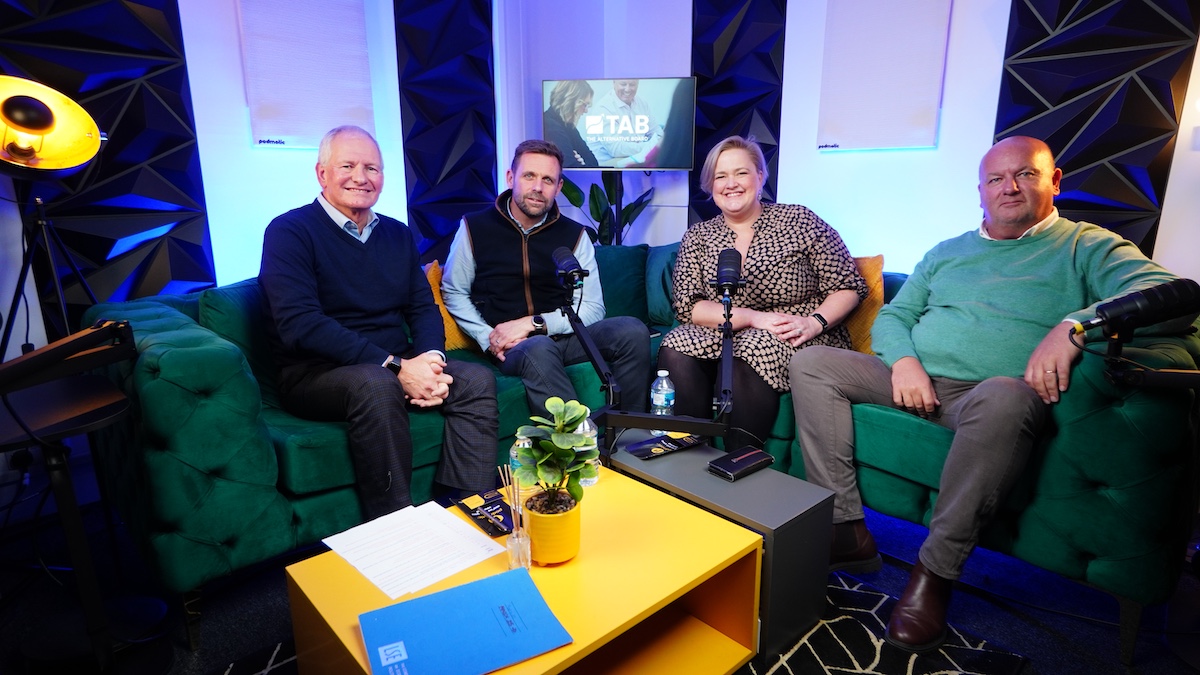
4 simple steps for starting a business blog: A beginner's guide
by Yekemi Otaru
Listen to Audio Version:
Nearly half of B2B buyers read 3-5 pieces of content before engaging with any salesperson. If you are a B2B technology or computing company, for instance, around 63% of articles in your industry are found and read through Google searches. Depending purely on social media to tell your story is not sufficient as organic searches overtake social media for website referrals. One common way for your potential buyer to find and learn about your business is through content marketing. Therefore, you might consider starting a business blog.
Starting a business blog
Step 1: Setting Goals
Before starting a business blog, you must decide what your goals are. Goals differ from business to business so it is important you take time to:
- Establish your goals
- Identify ways to measure progress towards your goals
- Review your goals in case they need to change
Establish your goals
The ultimate goal of blogging is usually to attract new customers. But you must break down your goal into actionable chunks to allow you focus on creating content that meets specific needs. For instance, you might want to establish yourself as a thought leader in your target market. This goal makes sense if you are new on the scene and you have other competitors offering similar products or services.
A follow-on goal could be to build an email list of people who are interested in your services. Remember people read many things you have written before signing up for anything. Therefore, showcasing your knowledge through thought leadership is the place to start.
Measure your progress
How will you know whether you're achieving your goal? If you are building your personal brand as a thought leader, you could measure how many followers you have each month. While it is great to see your follower count increase, don't get fixated on it. It is more about the quality of your network. Invest in your online relationships by creating content that starts conversations. Get involved in those conversations and reach out via email if appropriate. Other measurements might include webpage traffic, number of likes, number of downloads and shares.
Review your goals
Starting a business blog with specific goals in mind is a great way to focus your efforts. However, things change. If you find that your business has changed or the feedback you receive from customers is not quite what you expected, it's reasonable to review what you are doing. A Tel Aviv based B2B marketing agency had to review their content marketing strategy after they discovered that they were being investigated for spam. They started tracking and evaluating everything they were doing including:
- Links in their content
- Which piece of their content linked to
- Groups where they posted content
- Who’s the buyer persona we’re addressing
- Actual post copy
- Which buyer personas each content addressed
- Feedback from their target buyer personas
They looked at a few other things but the above shows a thorough review, which led to positive changes in their goals and strategy.
Step 2: Identify whom
Identifying why you are writing is great but it is arguably more important to know who you are writing for. Developing buyer personas will help you to create focused and relevant content. If your buyer is an Operations Manager with an objective to maintain staff morale while cutting costs, you can start creating articles that will resonate with that buyer. Every buyer has a different set of challenges so you must segment your content accordingly. Consider using categories and tags to do this. For instance, you might have content about time management hacks, improving staff retention and a separate category for the most effective team collaboration apps. When identifying who you are writing for, consider:
- Job responsibility
- Greatest challenges
Job responsibility
When developing your buyer's persona, you must understand what your target buyer is responsible for and what he is accountable for. Write a rough outline of what his or her job description is likely to be. Note key responsibilities. For example:
- Can he/she make buying decisions?
- Do he/she have a budget?
- How big is that budget?
- Is there a team reporting to him/her?
These sort of questions allow you to better understand the motivations and likely goals of your target buyer. There are several great buyer persona templates on the web like this one on the Alexa Blog.
Greatest challenges
Every job has challenges. To catch your target buyer's attention, you should offer solutions to their greatest challenges. Now that you understand their job role, you can stand in their shoes and identify the likely challenges that they face. One way to do this is to make a list of all the tasks that are involved in their role. Then against each task, add a measure of performance. Ask yourself:
What obstacles would stand in the way of performing well on this measure. You might need to speak to current or previous customers to develop a comprehensive list.
For instance, a Marketing Manager could be tasked with increasing brand awareness for his or her employer. How will the employer know that brand awareness has improved? Perhaps they measure web traffic, time on a web page and the number of followers they have on Twitter. What is likely to make it difficult to achieve good quality web traffic? Poor content, no content or misleading content. Now you can start to provide potential solutions...
Step 3: Be practical
The most valuable content is always practical and actionable. Valuable content leaves you with at least one thing you can do straight away. Therefore, your readers will be more inclined to tell others about your article. Some ways to create highly valuable content is to:
- Answer burning questions
- Share interesting/alarming stats about your industry
- Create a guide for a beginner or an ultimate guide with more in-depth content for advanced learners
Answer burning questions
There are some great places on the web to find questions that people want answers to. Check out Reddit, Quora.com and AnswerThePublic.com, for instance. Your customers are also a good source of questions. Also, talk to your customer service team to create a list of frequently asked questions that you can address through your blog posts.
Another approach is to follow popular comment threads in your industry to see what people are saying. This will give you an idea of what is topical. It gives you an opportunity to write content that showcases your knowledge and answers today's burning questions.
Share interesting/alarming stats
Much like how I started this blog post, stating stats is a powerful way of drawing people in to read your content. Depending on your industry, there are likely to be a worth of resources for trends, stats and case studies that you could use. I often use MarketingCharts.com and WordStream.com.
Articles in Entrepreneur.com and Forbes.com tend to include stats. You can follow the links to those stats and find the original report.
Create a guide
I love it when I'm looking for advice on how to do something and I find not just a blog post, but a GUIDE. It's like, "Wow! All my prayers are answered!" A guide is not just about blogging, it's about creating lead magnets. Lead magnets are content that your readers are willing to give their email address in exchange for access. They are usually more than a 500-word blog and include more detailed information. Popular guides are how-tos, checklists and cheat sheets. You can also create a guide from a series of blog posts. For instance, if you've written a few blogs on start-ups hiring their first employees, you could create a kind of compendium for start-up founders. Designrr is a great tool for turning blogs into e-book guides.
Step 4: Share online
The distribution side of blogging is often forgotten. If you write a blog post on your website, it is not automatically found and read. You will start to get organic readership through online searches but that will take time. A new blog needs lots of exposure and that's where sharing comes in. Here are some channels to consider before starting a business blog:
- Social media
- Email marketing
- Influencer marketing
- Online groups and forums
Let's briefly go through each of these.
Social media
Part of setting goals and identifying your audience includes knowing which social media platforms are relevant to engagement. Don't try to be everywhere. If you are just starting a business blog, pick 1-2 social media platforms and build an audience there. Follow influencers and engage in conversations.
Email marketing
When people start to sign up to hear from you, that's a big deal! Email marketing allows you to make direct contact with someone who you already know is interested in what you do. You may build this list from online sign-up forms or from your own list of contacts if you're starting from scratch. Start somewhere by emailing your blog posts to your contacts. And remember to ask them to share.
Influencer marketing
This type of marketing focuses on influencers rather a target customer. To use influencer marketing, you must identify people that might have an influence over your potential customers. These people usually have a passion for sharing content. Direct your content to them and get them to share your content. Influencer marketing platforms such as Mavrck and Social Bakers are good places to get started.
Online groups and forums
If you create content for a niche audience, online forums are your best friend. You can answer questions with your content and explore the real challenges for people in your industry. Over time, you will be known as a thought leader in your area of choice. This is a great way to build an audience for not just your business blog but for your personal brand too.
Have you recently started a business blog? What is working for you? What isn't going quite as you thought it would?
By Yekemi Otaru - YO! Marketing
This article was originally published on July 5th 2018 on the YO! Marketing blog by Yekemi Otaru.
Related articles

Update your LinkedIn profile and get found by your dream clients
Judy Parsons, LinkedIn Marketer, gives us four tips on how to effectively update your LinkedIn profile so you find your dream clients.

Tips on how to move your business online
Looking to move your business online but aren’t sure where to start? Find out some of our tips here with Campbell Ure from The Alternative Board Glasgow.

Marketing tips and advice for small business owners
At TAB, we've worked with thousands of business owners who find marketing a challenge. Here are our marketing tips and advice for small business owners.





